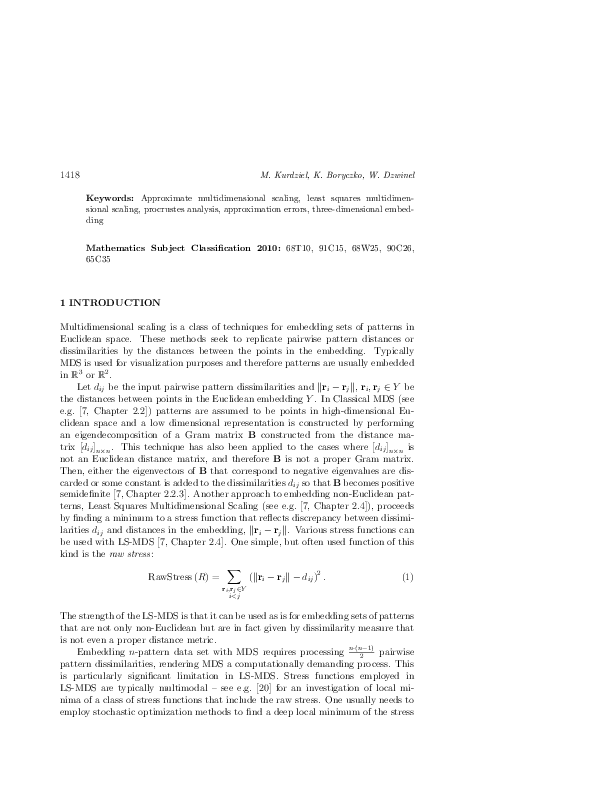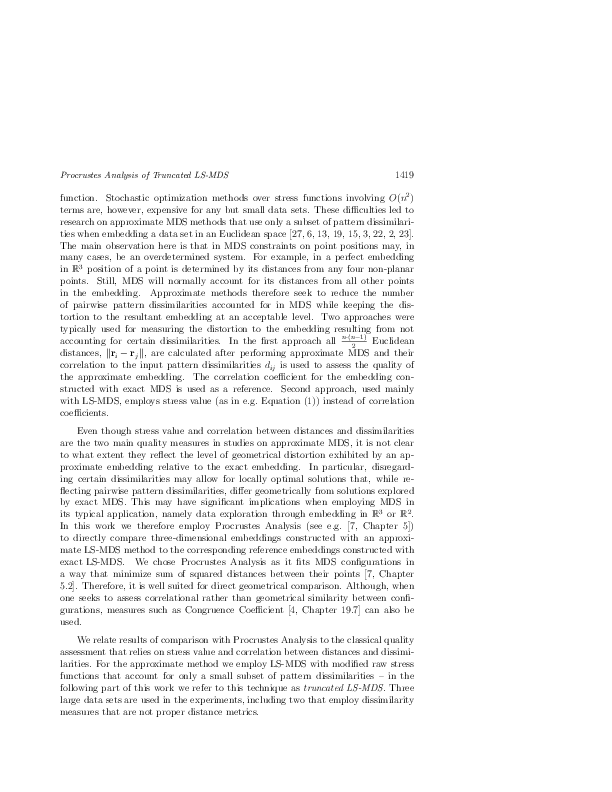Procrustes Analysis of Truncated Least Squares Multidimensional Scaling
keywords: Approximate multidimensional scaling, least squares multidimen- break sional scaling, procrustes analysis, approximation errors, three-dimensional embedding
Multidimensional Scaling (MDS) is an important class of techniques for embedding sets of patterns in Euclidean space. Most often it is used to visualize in mathbbR3 multidimensional data sets or data sets given by dissimilarity measures that are not distance metrics. Unfortunately, embedding n patterns with MDS involves processing O(n2) pairwise pattern dissimilarities, making MDS computationally demanding for large data sets. Especially in Least Squares MDS (LS-MDS) methods, that proceed by finding a minimum of a multimodal stress function, computational cost is a limiting factor. Several works therefore explored approximate MDS techniques that are less computationally expensive. These approximate methods were evaluated in terms of correlation between Euclidean distances in the embedding and the pattern dissimilarities or value of the stress function. We employ Procrustes Analysis to directly quantify differences between embeddings constructed with an approximate LS-MDS method and embeddings constructed with exact LS-MDS. We then compare our findings to the results of classical analysis, i.e. that based on stress value and correlation between Euclidean distances and pattern dissimilarities. Our results demonstrate that small changes in stress value or correlation coefficient can translate to large differences between embeddings. The differences can be attributed not only to the inevitable variability resulting from the multimodality of the stress function but also to the approximation errors. These results show that approximation may have larger impact on MDS than what was thus far revealed by analyzes of stress value and correlation between Euclidean distances and pattern dissimilarities.
mathematics subject classification 2000: 68T10, 91C15, 68W25, 90C26, 65C35
reference: Vol. 31, 2012, No. 6+, pp. 1417–1440


